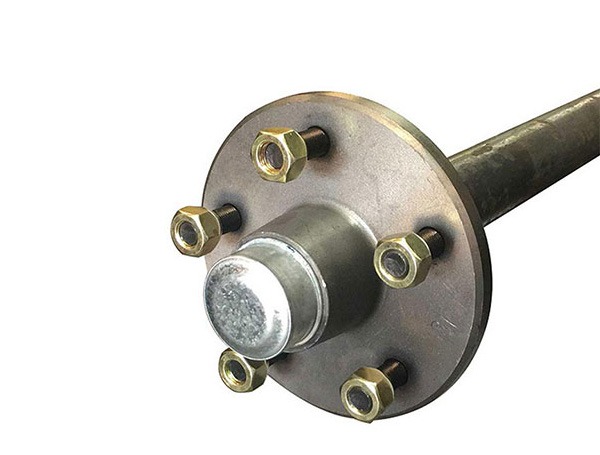Trailer axles are critical components of any trailer, providing support, stability, and load-bearing capacity. Whether you’re towing a camper, boat trailer, or utility trailer, understanding the types, benefits, and maintenance of trailer axles is crucial for safe and efficient towing.
Types of Trailer Axles
- Single Axles: Single axles are common in smaller trailers and provide straightforward towing. They have one axle that supports the trailer’s weight and distributes the load evenly. This type is suitable for lighter loads and easier maneuverability.
- Tandem Axles: Tandem axles consist of two axles placed close together. They are ideal for heavier trailers and provide better weight distribution, stability, and improved handling on the road. Tandem axles reduce sway and offer higher load capacities, making them popular for RVs and larger utility trailers.
- Triple Axles: Less common but used in very heavy trailers, triple axles offer even greater weight distribution and stability. They are found in large RVs, livestock trailers, and commercial transport trailers where substantial loads need to be carried safely.
Benefits of Dual Trailer Axles
Dual trailer axles, often referred to in the context of tandem axles, offer several advantages:
- Enhanced Stability: The dual axle setup distributes weight more evenly, reducing trailer sway and improving stability during towing. This is particularly beneficial on highways and in adverse weather conditions.
- Increased Load Capacity: Tandem axles can carry heavier loads compared to single axles. This makes them suitable for hauling equipment, construction materials, or multiple vehicles.
- Improved Tire Longevity: With more tires distributing the load, wear and tear on each tire are reduced. This results in extended tire life and fewer instances of blowouts or tire failures.
- Better Braking Performance: The additional axles improve braking efficiency, especially when towing heavy loads. This enhances overall safety by reducing stopping distances and maintaining control over the trailer.
Maintaining Trailer Axles
Proper maintenance is essential to ensure trailer axles perform optimally and safely:
- Regular Inspections: Check axles, bearings, and suspension components for wear and tear. Look for signs of rust, cracks, or loose fittings that could compromise safety.
- Greasing Bearings: Keep axle bearings properly lubricated to reduce friction and heat buildup. This prevents premature wear and ensures smooth operation.
- Monitoring Tire Pressure: Maintain correct tire pressure to evenly distribute the load and prevent excessive wear. Inspect tires for signs of wear and replace them when necessary.
- Brake Checks: Regularly inspect brakes and adjust as needed to ensure they are functioning correctly. Properly functioning brakes are crucial for safe towing.
- Alignment and Balance: Periodically check axle alignment and trailer balance. Improper alignment can cause uneven tire wear and affect handling on the road.
Conclusion
Understanding the types, benefits, and maintenance of trailer axles is essential for anyone who regularly tows trailer axles. Whether you opt for single, tandem, or triple axles depends on your trailer’s size, weight capacity, and intended use. By choosing the right axle configuration and maintaining it properly, you can ensure safe, efficient towing for years to come.
